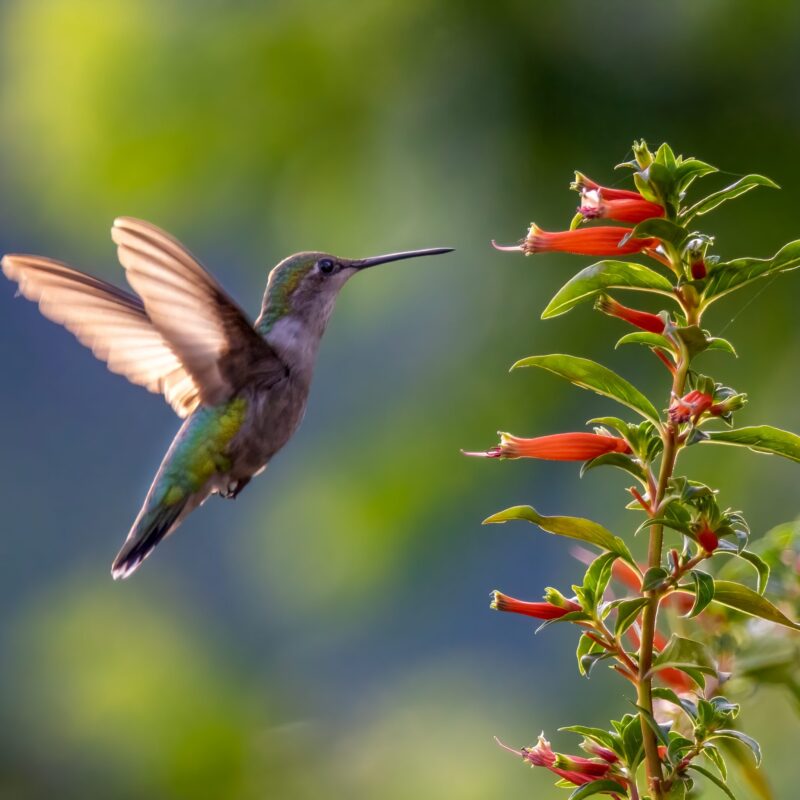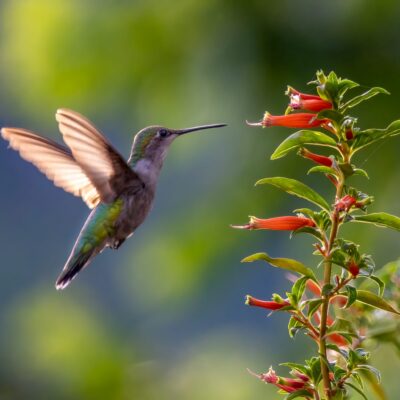Riesling’s come a long way since the 1970s. After generations of fractured vineyard ownership in the Mosel dating back to Napoleon, the 1970s brought replanting and remapped vineyard ownership. New, sensible roads greatly improved the harvesting process, and many areas planted habitats to attract beneficial birds to the vineyards. Upward creeping temperatures due to climate change have gifted us a decade-long string of gorgeous vintages. Riesling’s ancient melody, recomposed in a changing landscape, adds up to some of the world’s highest quality wine—so why aren’t we drinking more of it?
Its prevalence took a turn for the worse around World War I, when poverty, coupled with the phylloxera grape blight that crippled most of Europe’s vineyards, delivered a double blow that left winemakers reeling for decades. At this crucial time, the United States passed Prohibition, stripping Europe of an important export market. Hasty replantings, young vines and cheap winemaking meant lakes of innocuous wine found their way to post-Prohibition America. By the 1970s, demand for sweet, inexpensive Riesling pervaded our wine shop shelves.
Then, a strange thing happened: The U.S. public swiftly turned its back on riesling and embraced chardonnay and cabernet sauvignon, in part to support our domestic successes in California.
“A century ago, rieslings were the most popular wines in the world. Then people lost their minds,” said Market Street Wineshops owner Robert Harllee. Riesling became a dismissed collective memory, summed up in the much-repeated falsehood that riesling is sweet. But this one-dimensional view of the wine is slowly changing as a younger wine drinking generation is embracing a larger view of wine, and fueling a resurgence of less-popular grape varieties.
Locally, it’s been hard to entice wine drinkers toward riesling, which, for folks in the wine business, is baffling.
“One of the best wines I ever had in my life was a ’76 JJ Prum Auslese riesling,” said Vincent Derquenne, who offers two rieslings between his restaurants, Bizou and Bang!—a lone Alsatian option by Leon Boesch at Bizou and a Klemens Weber at Bang!.
Will Richey, another riesling lover, presents a concise yet stunning selection at The Alley Light; for an ethereal pear-like wine, try the Schloss Lieser. At Market Street Wineshop, Harllee can wax poetic on the grape, then send you home with a lip-smacking bottle of Anton Bauer from Alsace.

Ox-Eye Vineyards’ John Kiers makes an affordable reserve riesling from his high-elevation limestone plot. Photo: Norm Shafer
And what of Virginia riesling? In the early days, the grape could be counted among Virginia’s top plantings, but has since been ripped out for other varieties that can better withstand our local humidity. Still, we see a riesling resurgence in cooler microclimates. In 2013, 42 acres of Virginia riesling yielded about 100 tons of fruit, according to the 2013 Commercial Grape Report conducted by the Virginia Wine Board Marketing Office, but just a handful of producers bottle a 100 percent riesling. John Kiers at Ox-Eye Vineyards in Staunton makes an interesting and affordable Scale House Reserve dry riesling from a higher elevation limestone plot. Inspired by Alsace and the Finger Lakes, his wine is a window into the potential of riesling in Virginia’s cooler areas.
If riesling lies outside your usual repertoire, it might prove more approachable than you expect. Recent DNA analysis revealed that riesling and chardonnay share a genetic parent, making them half- siblings. Both grapes have potential for endless complexity, depth and balance, and riesling’s natural acidity begs for food and flavor—each mouthwatering sip prompts the next bite, transforming any dining experience into a symphony of tension and release. And then there’s the topic of value. Because the public hasn’t yet caught on to the darling of the wine world, riesling prices are low, which means in your own backyard, you can find world-class bottles for a song.—Erin Scala
Debunking the myths of riesling
Riesling just might be the world’s most misunderstood grape. Test your riesling smarts with these myths:
Myth: All riesling is sweet.
Reality: Any grape variety can be made into a dry or sweet wine depending on when the fermentation ends and how much of the grape’s original sugar content is left behind. Even late-harvest grapes can be fermented dry. The reality is that some riesling is sweet.
Myth: White wines like riesling don’t age, so they aren’t “fine wines.”
Reality: Only in the last few centuries have white wines been tagged as “un-ageable.” The truth is that many fine white wines can age for decades or more. High-quality riesling can taste delicious soon after being bottled, but also 10, 20 or 30 years later. Riesling’s inherent acidity is a natural preservative.
Myth: All riesling tastes the same.
Reality: Rieslings from different parts of the world can taste vastly different from one another. If you think you don’t like riesling because you tried a cheap bottle of sweet stuff years ago, give it another shot. The riesling available in our market today is of the highest quality it’s ever been. For a fun lesson in how location can affect a wine’s taste, try a dry, lime-zesty, Australian riesling alongside a peachy Mosel Kabinett.—E.S.

Market Street Wineshop stocks a robust collection of rieslings from each corner of the globe. Photo: Emily Sacco
Around the world
Riesling is highly expressive of the soil it’s planted on. Think of riesling as a prism, through which a kaleidoscope of flavors can be refracted.
From the steep, slate hills of the Mosel in Germany, riesling can smell like wet rocks, stone fruits and flowers. A fine one can stun you into reflective silence. Even a mediocre one can be a joyous, pleasant experience.
Here in the United States, the wines are made on a spectrum of dry to sweet. As they age, the sweeter wines are perceived as drier. A 1980 Zilliken Auslese riesling, for instance, tasted sweet when it was first made; but open it now, and it tastes practically bone dry, with aromas of fallen leaves after the rain. But drinking these wines early is an indulgence in hedonism brought on by the peachy, juicy pleasantness of a Gunderloch or Merkelbach riesling.
For a truly unique expression, try riesling from iron-rich, bright red, terra rossa soil. Riesling from this soil manifests in sanguine, earthy aromas and can yield a silty, sandy texture that is perfect with fatty foods and braised meats. In Germany’s Pfalz region, the rare Pfeffingen riesling from the Weilberg vineyard’s crimson soils is worth the quest, even if it takes you years to find. Not only is the wine magical, but the discovery of a Roman coin in the Pfeffingen vineyards led to a major excavation that revealed an ancient Roman settlement.
In Australia, riesling refracts into distinct and powerful lime aromas, and the producers make bone-dry wines with bright, citrusy acidity. Eden Valley is the hot spot, and Jeffrey Grosset—the leader of the pack—is world famous for his sizzling, dense rieslings, and for championing the screw cap closure early on. Also look out for Henschke, Mesh and Pewsey Vale.
Riesling is booming in New Zealand. The unique clay soils of Nelson yield tart, bright rieslings from Seifried Estate, while the schist in Central Otago gives Rippon riesling its subtle power and finesse. At Felton Road, the riesling is more on par with a peachy Mosel. Bright and dry versions from Marlborough are citrusy and affordable, while the juicy, floral rieslings from Pegasus Bay of Canterburry can be hauntingly delicious.
You can find some tasty and inexpensive rieslings from South Africa. At Shebeen, try Paul Cluver’s riesling for a lemon-fennel expression.
On the home front, we see riesling doing well in Washington State (look for Pacific Rim, Chateau Ste. Michelle and Kiona), New York’s Finger Lakes region, and we’re just beginning to see some interesting riesling in Virginia.—E.S.
Shop like a pro
When you shop for German rieslings, keep your eye out for the word “Prädikatswein.” It usually appears in very small print on the label, but it is an indicator that this wine is in the highest quality class of German wines.
For a unique glance into Germany’s future potential, look for the letters “GG” printed on the label, or in raised letters on the bottle. The GG wines are a relatively new style of wine of extremely high quality, and for the most part, they are dry and compact. Like most world-class wines, they can be quite pricey, though in comparison to Grand Cru Burgundy, the GGs are incredible values.—E.S.

The sweetness in a Kabinett-style riesling pairs perfectly with Thai 99 II’s green curry. Photo: Amanda Maglione
Perfect pairings
Pairing food with such a diverse and versatile grape as riesling is a neverending adventure! Here are a few of our favorite combinations. You can find many of the wines at Market Street Wineshop, Tastings, Whole Foods and In Vino Veritas.—E.S.
Dry
Pfeffingen (Pfalz, Germany)
Pair with: White asparagus, grilled summer squashes and shellfish
Shafer-Frohlich (Nahe, Germany)
Pair with: A fresh heirloom tomato from Radical Roots (City Market)
Paul Cluver (South Africa)
Pair with: A shaved fennel and citrus salad
Henschke Julius (Australia)
Pair with: Pork chop and a lime-parsley-onion salad
Just Off Dry
(a touch of sweetness)
Richard Bocking Devon (Mosel, Germany)
Pair with: Pâté, fatty charcuterie, pears and blue cheese
Kabinett-style riesling from any producer in the Mosel
Pair with: Green curry from Thai 99 II
Off Dry
(sweet, like a fresh peach)
JJ Prum Spatlese (Mosel, Germany)
Pair with: Peaches and cream, or a caramel dessert
Sweet
Zilliken Auslese (Mosel, Germany)
Pair with: Spicy ramen and mushrooms





